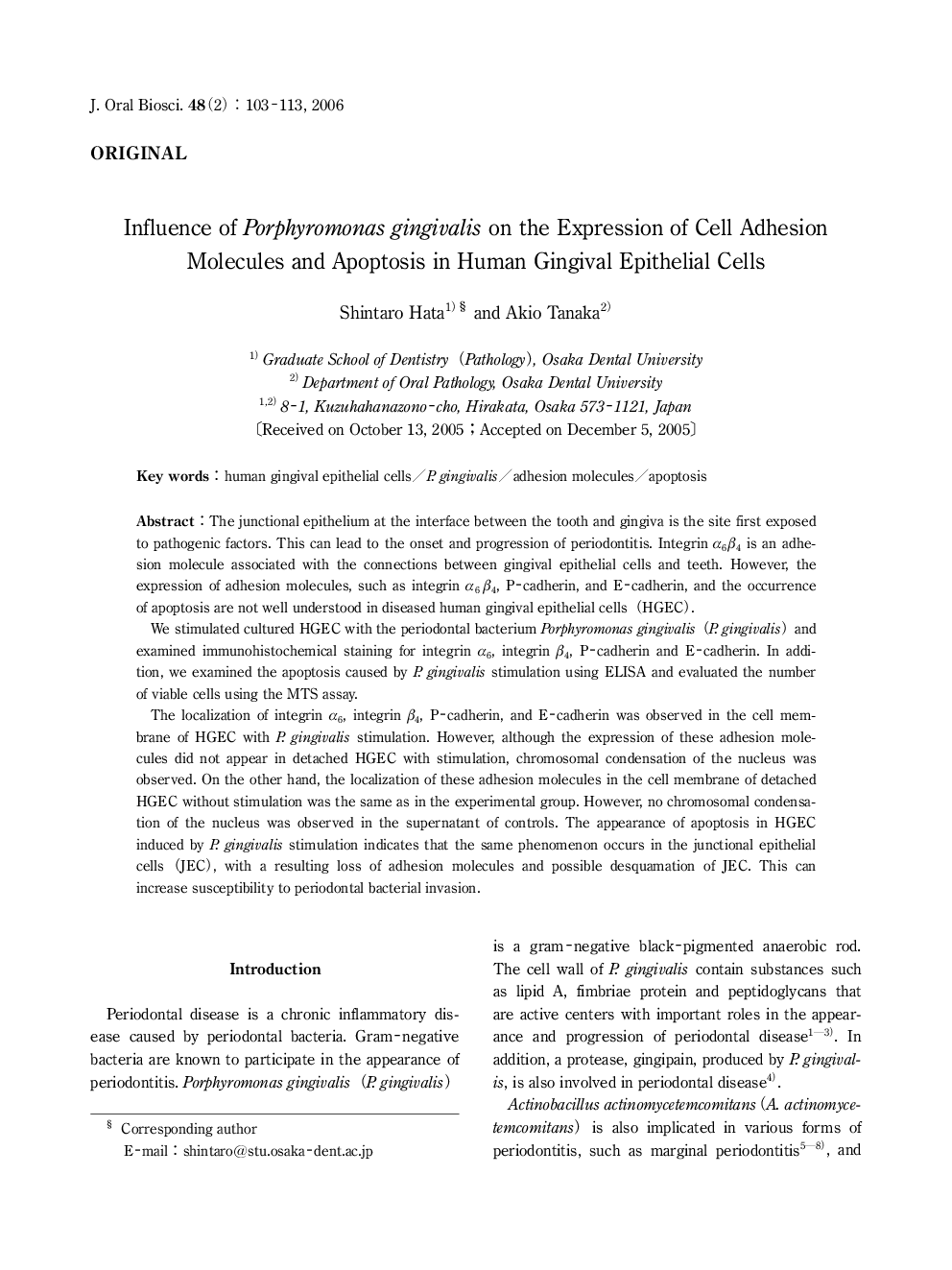| Article ID | Journal | Published Year | Pages | File Type |
|---|---|---|---|---|
| 2777135 | Journal of Oral Biosciences | 2006 | 11 Pages |
The junctional epithelium at the interface between the tooth and gingiva is the site first exposed to pathogenic factors. This can lead to the onset and progression of periodontitis. Integrin α6β4 is an adhesion molecule associated with the connections between gingival epithelial cells and teeth. However, the expression of adhesion molecules, such as integrin α6β4, P-cadherin, and E-cadherin, and the occurrence of apoptosis are not well understood in diseased human gingival epithelial cells (HGEC).We stimulated cultured HGEC with the periodontal bacterium Porphyromonas gingivalis (P. gingivalis) and examined immunohistochemical staining for integrin α6, integrin β4, P-cadherin and E-cadherin. In addition, we examined the apoptosis caused by P. gingivalis stimulation using ELISA and evaluated the number of viable cells using the NITS assay.The localization of integrin α6, integrin β4, P-cadherin, and E-cadherin was observed in the cell membrane of HGEC with P. gingivalis stimulation. However, although the expression of these adhesion molecules did not appear in detached HGEC with stimulation, chromosomal condensation of the nucleus was observed. On the other hand, the localization of these adhesion molecules in the cell membrane of detached HGEC without stimulation was the same as in the experimental group. However, no chromosomal condensation of the nucleus was observed in the supernatant of controls. The appearance of apoptosis in HGEC induced by P. gingivalis stimulation indicates that the same phenomenon occurs in the junctional epithelial cells (JEC), with a resulting loss of adhesion molecules and possible desquamation of JEC. This can increase susceptibility to periodontal bacterial invasion.
